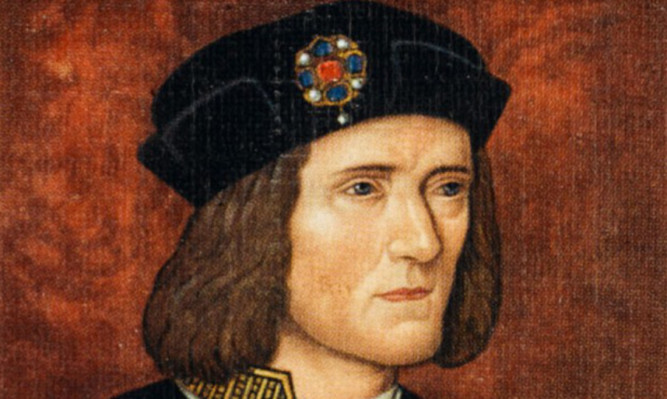DNA points to a skeleton found under a car park in Leicester being that of King Richard III, the University of Leicester has confirmed.
There were cheers from media who had gathered from around the world as the announcement was made at the University of Leicester.
University archaeologist Dr Jo Appleby said the skeleton was found in good condition with its feet missing in a grave.
Its hand were crossed over the front of the pelvis and there was no evidence of a coffin or shroud found with the skeleton.
Dr Appleby, an osteoarchaeologist based at the University’s School ofArchaeology and Ancient History, said: “Taken as a whole the skeletal evidence provides a highly convincing case for identification as Richard III.
“The analysis of the skeleton proved that it was an adult male but was an unusually slender, almost feminine, build for a man. This is in keeping with historical sources which describe Richard as being of very slender build.
“There is however no indication that he had a withered arm – both arms were of a similar size and both were used normally during life.”
Richard III was sometimes depicted historically with a withered arm and hunched back.
“The skeleton is that of an individual aged between the late twenties and late thirties. We know that Richard III was 32 when he died and this is entirely consistent with the Grey Friars skeleton.”
Announcing the results to the media, Mr Buckley said: “It is the academic conclusion of the University of Leicester that the individual exhumed at GreyFriars in August 2012 is indeed King Richard III, the last Plantagenet King of England.
“It has been an honour and privilege for all of us to be at the centre of an academic project that has had such phenomenal global interest and mass public appeal. Rarely have the conclusions of academic research been so eagerly awaited.”
University of Leicester geneticist Dr Turi King confirmed DNA from the skeleton matched that of two of Richard III’s family descendants – Canadian bornfurniture maker Michael Ibsen and a second person who has asked to remain anonymous.
Dr King said: “The DNA sequence obtained from the Grey Friars skeletal remains was compared with the two maternal line relatives of Richard III.
“We were very excited to find that there is a DNA match between the maternal DNA from the family of Richard III and the skeletal remains we found at the Grey Friars dig.”
Analysis of the skeleton showed that the individual was male and in his late 20s to late 30s. Richard III was 32 when he was killed at the Battle of Bosworth in 1485.
The analysis also showed the individual had a slender physique and severe scoliosis – a curvature of the spine – possibly with one shoulder visibly higher than the other. This is consistent with descriptions of Richard III’s appearance from the time, the researchers said.
Trauma to the skeleton showed the king died after one of two significant wounds to the back of the skull – possibly caused by a sword and a halberd.
Dr Appleby said this was consistent with contemporary accounts of the monarch being killed after receiving a blow to the head.
The skeleton also showed a number of non-fatal injuries to the head and rib and to the pelvis, which is believed to have been caused by a wound through the right buttock.
Dr Appleby said these may have been so-called “humiliation injuries” inflicted after his death.
“The skeleton has a number of unusual features: its slender build, the scoliosis and the battle related trauma,” she said.
“All of these are highly consistent with the information that we have about Richard III in life and about the circumstances of his death.
“Taken as a whole, the skeletal evidence provides a highly convincing case for identification as Richard III.”
